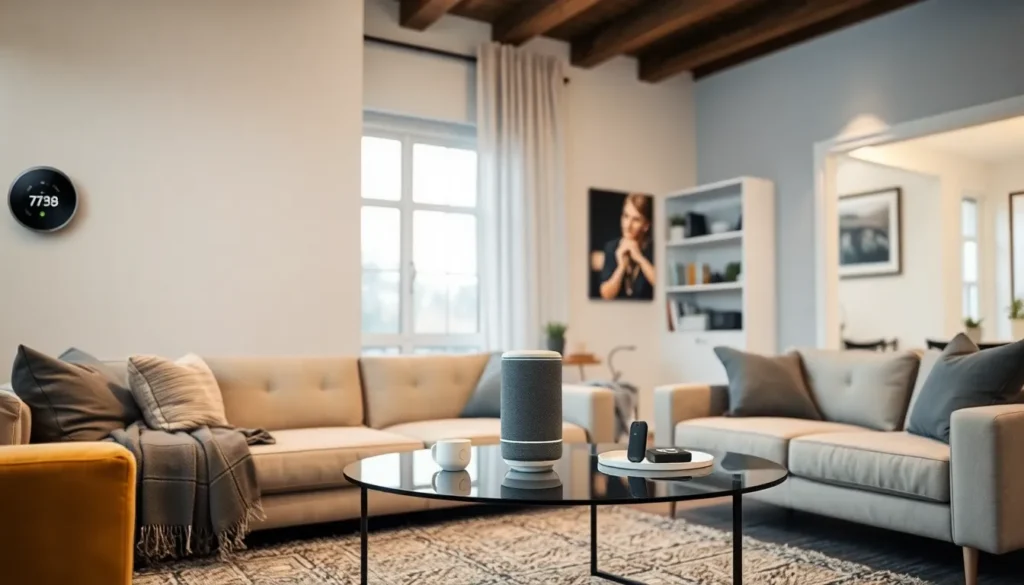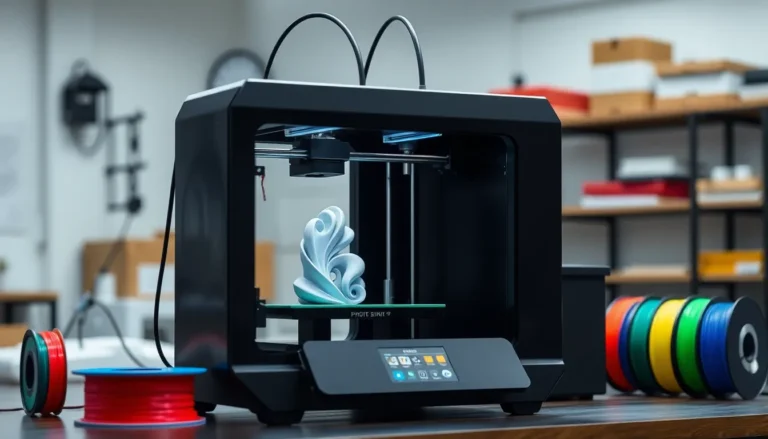Table of Contents
ToggleThe rise of consumer IoT is transforming everyday life, making homes smarter and more efficient. From smart thermostats that learn user preferences to voice-activated assistants that control appliances, these interconnected devices are reshaping how people interact with their environment. As technology evolves, the convenience and functionality of IoT products continue to attract consumers seeking seamless integration into their daily routines.
With an ever-growing array of devices, understanding consumer IoT’s impact is essential. It’s not just about convenience; it’s also about enhancing security, optimizing energy usage, and providing data-driven insights. As more households embrace this technology, the potential for innovation and improvement in quality of life becomes limitless. Exploring the landscape of consumer IoT reveals exciting opportunities and challenges that lie ahead.
Overview of Consumer IoT
Consumer IoT encompasses a broad range of smart devices connected to the internet, enhancing user experiences in homes and daily life. Common devices include smart speakers, smart thermostats, and security cameras. Each device collects and shares data to improve functionality and convenience.
Consumer IoT devices offer several key benefits:
- Energy Efficiency: Smart thermostats and lighting systems monitor usage patterns, optimizing energy consumption and reducing costs.
- Security Enhancements: Security cameras and smart doorbells provide real-time video feeds and alerts, improving home security.
- Health Monitoring: Wearable devices track health metrics, alerting users to potential issues and promoting wellness.
- Home Automation: Devices like smart plugs enable users to control appliances remotely, streamlining daily tasks.
- Data Insights: Collecting user data allows manufacturers to refine products and improve user experience.
As the adoption rate of consumer IoT rises, innovation in technology continues to expand. Integration among devices enhances capabilities, fostering advancements in machine learning and artificial intelligence. The growing ecosystem creates possibilities for personalized experiences while raising concerns about privacy and security. Addressing these challenges is crucial as the technology evolves.
Benefits of Consumer IoT

Consumer IoT offers various advantages, transforming how individuals interact with their environments. These benefits include enhanced convenience, improved efficiency, increased security, and valuable data insights.
Enhanced Convenience
Consumer IoT products streamline daily routines through automation and integration. Smart home devices allow users to control lighting, temperature, and security systems remotely. For example, smart thermostats adjust temperatures based on user preferences, while smart speakers provide hands-free access to information and entertainment. This seamless control creates an environment that caters to personal needs, significantly reducing the hassles of manual management.
Improved Efficiency
Consumer IoT devices promote energy efficiency by optimizing usage. Smart plugs and energy monitors track consumption patterns, enabling users to identify and eliminate waste. For instance, smart bulbs can dim or switch off automatically when a room is unoccupied. This reduction in energy usage not only lowers utility bills but also contributes positively to environmental sustainability. Additionally, improved efficiency extends to time savings, as automation in tasks allows users to focus on more important activities.
Increased Security
Consumer IoT enhances security through real-time monitoring and alerts. Smart security cameras and motion sensors provide continuous surveillance, notifying homeowners of suspicious activities. For example, users receive alerts on their smartphones when cameras detect movement, enabling prompt responses. Moreover, smart locks offer remote access management, allowing users to grant entry to guests without being physically present. This layered approach to security enhances peace of mind for homeowners.
Valuable Data Insights
Consumer IoT generates valuable data that aids decision-making. Smart wearables, like fitness trackers, provide insights into health metrics, helping users maintain wellness goals. Additionally, smart appliances, such as refrigerators, track inventory and suggest recipes, minimizing food waste. By harnessing data analytics, users gain a deeper understanding of their habits and preferences, leading to improved overall quality of life.
Challenges in Consumer IoT
Consumer IoT faces significant challenges that impact the overall user experience and technology adoption. Two primary concerns include security risks and interoperability issues.
Security Risks
Security risks pose a considerable threat to consumer IoT devices. Vulnerabilities can lead to unauthorized access, data breaches, and privacy violations. For instance, weak default passwords and outdated firmware often expose devices to cyberattacks. A 2022 report indicated that over 80% of IoT devices contained vulnerabilities, highlighting the risk of compromised data or controlled systems. Additionally, the storage and transmission of sensitive data, such as health information from wearables, warrant the need for robust encryption methods. Users must remain vigilant and implement security measures, including regular updates and strong authentication processes.
Interoperability Issues
Interoperability issues complicate the seamless integration of various consumer IoT devices. Many devices rely on different communication protocols, leading to compatibility problems. For example, smart speakers may struggle to connect with security cameras if they use distinct network standards. A survey found that 63% of users reported difficulties in integrating devices from multiple brands. Consequently, this fragmentation may hinder the user experience and limit the potential benefits of IoT ecosystems. Standardizing communication protocols and promoting collaboration among manufacturers can enhance device compatibility, providing users with a more unified and efficient smart home experience.
Future Trends in Consumer IoT
Consumer IoT continues to evolve rapidly, driven by advancements in technology and changing user expectations. Future trends focus on increased integration of artificial intelligence and machine learning, along with the expansion of smart home devices.
AI and Machine Learning Integration
AI and machine learning play critical roles in the future of consumer IoT. Enhanced algorithms enable devices to analyze user behavior and preferences, adapting functionalities accordingly. For example, smart thermostats learn from user patterns to optimize heating and cooling schedules, resulting in up to 30% energy savings. Additionally, voice-activated assistants utilize AI to improve responsiveness and provide personalized recommendations, transforming interaction styles between users and devices. Overall, this integration fosters increased automation and convenience, enhancing user experiences.
Expansion of Smart Home Devices
The expansion of smart home devices shapes the consumer IoT landscape. Forecasts indicate that the number of connected devices in households may exceed 30 billion by 2030. Categories such as smart appliances, health monitoring devices, and advanced security systems are seeing significant growth. For instance, smart refrigerators can manage inventory and suggest recipes based on available ingredients, while smart locks provide keyless entry and remote access monitoring. The proliferation of these devices enhances home automation, efficiency, and security, while fostering innovation across various industries.
The rise of consumer IoT is reshaping daily life in ways previously unimaginable. As smart devices continue to integrate into homes, they offer unparalleled convenience and efficiency while enhancing security and providing valuable insights. The potential for innovation is immense as technology evolves and user expectations shift.
However, it’s crucial to remain vigilant about the challenges that accompany this growth. Addressing security vulnerabilities and ensuring seamless device interoperability will be essential for maximizing the benefits of consumer IoT. With the right focus on these areas, households can fully embrace the transformative power of connected technology, paving the way for a smarter, safer, and more efficient future.








